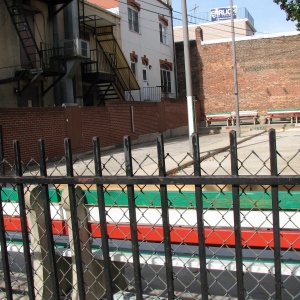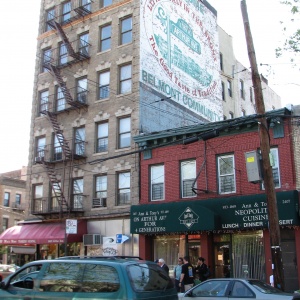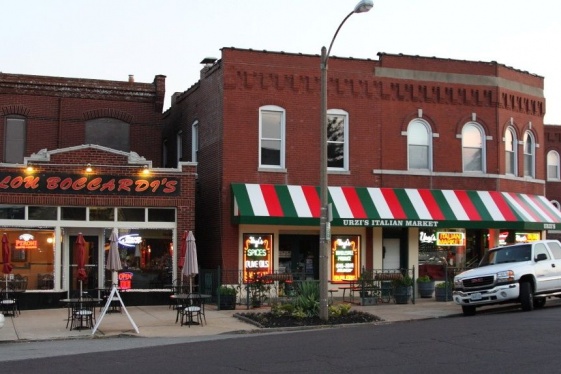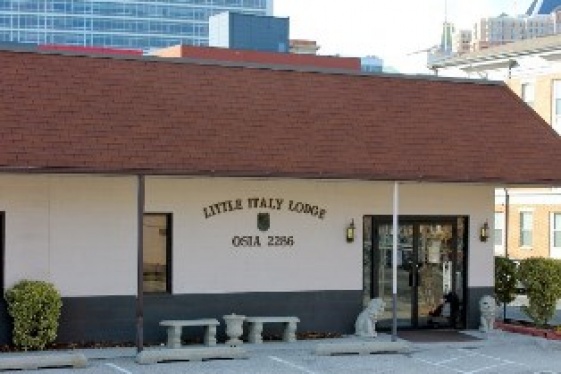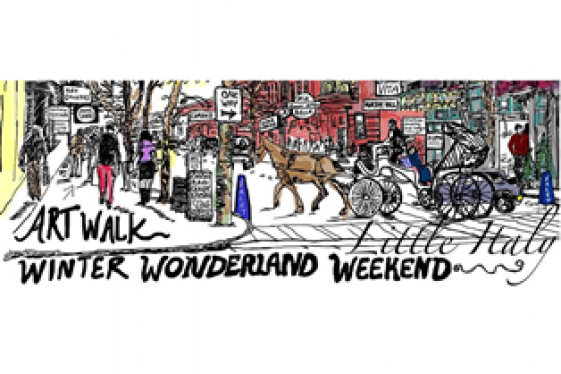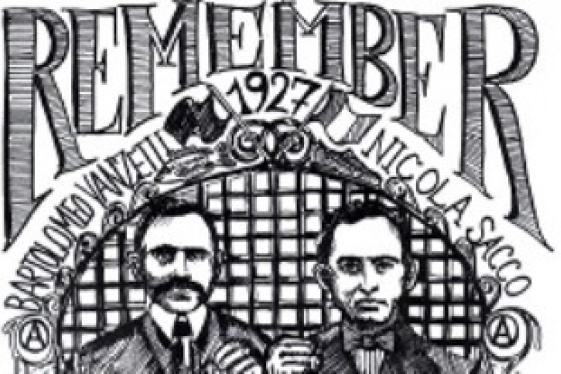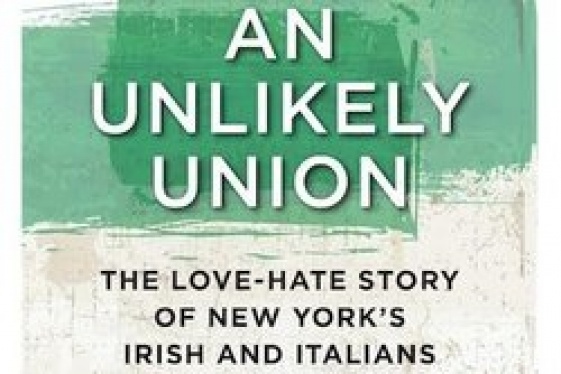
Jerome Krase (Author of America’s Little Italies: Past, Present and Future)
Le Little Italies di America: Passato, Presente e Futuro. Incontriamo il Professor Jerome Krase

There is a fascination in the concept of Little Italy that still exists today, when many of these Italian neighborhoods are no longer there. Outdated, but only in some cities, the principle of physically limiting an area of the city according to Italian criteria, the concept of being together, making communities and proudly celebrating their origins remains, sometimes more virtually. We the Italians is in part just that, the virtual re-proposition on the web of the principles that held together the Italians who arrived in America during mass emigration.
That's why the topic remains very important for us: and we are happy to open our 2019 by talking to one of the most important experts in this field, Professor Jerome Krase, author of "America's Little Italies: Past, Present and Future".
Professor Krase, you spent decades documenting the Little Italies in America. It is a fascinating subject…
Actually Umberto, my research on Little Italies is global in scope. Some of the non-USA examples are in Toronto, Canada, London, Great Britain, and Sidney, Australia. I visited and photographed in most of them and, was very surprised to view a photographic exhibition of “Little Italy” (Kleng Italienesch) at the Luxembourg Embassy in Berlin. Here is a list of my publications on Little Italy and Italian Americans.
How do you define Little Italy?
As to how I define Little Italy, it would take a huge book to describe all the ways that it is done. Historically most definitions have come from the field of demography by which Little Italy is simply a neighborhood in which most residents are able to trace their roots to Italy. Today, on the other hand, the vast majority of places referred to as Little Italies is what I call a touristic “Ethnic Theme Park.” In these extremely popular venues, few, if any, of the local residents are of Italian-descent, but visitors are still attracted to them by their, perhaps mythological, reputation as authentic Italian enclaves. Another large group of people who regularly visit Little Italies to shop and eat are, mostly nostalgic older Italian Americans who seem to be seeking some kind of cultural refreshment. To me they are a puzzle, as they ought to know better.
Although, perhaps not uniquely, I tend to think of “Little Italy” as an idea or as an ideal. In either case, this utopian urban village is a very powerful notion that captures the minds of people seeking a safe and comfortable place in which to live, or a commercial district to shop for Italian fashions and sample delicious food. What Americans call annual “Feasts” and Italians call Feste are the times of year during which local streets are jam-packed with visitors from near and far. There are many other ways by which people learn about Italian neighborhoods. For example, the semi-fictional idea of Little Italy has long captured the attention of Italian, Italian American or other fiction writers and film-makers who have fashioned from their own experience, or more likely their naïve imaginations, an ethnically and visually appropriate location for an organized crime drama like Goodfellas or a romantic comedy like Moonstruck.
In reference to the latter, when I was appointed by Governor Mario Cuomo to membership of the New York State Council for the Humanities in the 1980s, I was asked by a DreamWorks executive on the Council what I thought about Cher’s Italian American accent. I was told that the director of the film had hired a famous writer to work on her accent. To be honest, I told him, her accent was one I seldom heard in the film’s Brooklyn’s Carroll Gardens setting. However, it was one that most viewers would recognize as stereotypically Italian American. In contrast, when I was active in Italian American community organizations, I had met on several occasions a real Italian American Brooklynite actor in the film, Vincent Giardina, whose “normal” voice would not pass as authentically Italian American.
In Movieland, there are many, both positive and negative, models of Little Italy as an ideal ethnic enclave which can be at the same time quietly dark and sinister as well as loud, bright and friendly. What they all have in common is being encased in music such as the 1950’s popular music soundtrack that included Dione and the Belmont’s “I wonder Why” in Chazz Palmentieri’s A Bronx Tale, or the Italian and Italian American inspired soundtracks of Mario Puzo-inspired Godfather trilogy (1972, 1974, 1990). It must be noted that “The Belmonts” got their name from the Belmont Little Italy in which they and Chazz Palmentieri grew up, that was the setting for A Bronx Tale. A personal example of the power of music is when I took my children and grandchildren to Sicily to visit my grandparents’ hometown of Marineo in the Province of Corleone, during which I couldn’t get the theme song from The Godfather (1972), “Speak Softly Love,” out of my head.
As to essential elements of real and imagined Little Italies, in my writing, and especially in my photography, I have focused on the vernacular or otherwise commonplace landscapes of urban street scenes. Universally required are, mostly “red-sauce,” Italian Restaurants, barber shops, delicatessens (salumerie), both bread and pastry bakeries, pork stores, green-grocers, men of various ages congregating on street corners, signs for social clubs, children playing the streets, and women shopping at local stores. The variety of street-scenes vary depending upon the predominant Italian generation (1st,2nd, 3rd, etc) and the proportion of non-Italian ethnics living in the area. Social class is another important variable, but most stereotypically they are working-class Today “hipsters,” Italian American or not, have become a common feature of historically Italian enclaves in the center of the city that are rapidly gentrifying.
The story of the several Little Italies in America have a few turning points common to almost every one of them. The crowds of a century ago, the transformations of the post-war period, the emptying of Italians in better economic conditions that moved to more comfortable neighborhoods...
In my well-informed opinion, Little Italies are iconic because Italians stayed where they first settled a generation or two longer than the other ethnic groups such as Irish and Eastern European Jews with whom they first shared the neighborhood. What I discovered during the course of my extensive research in Italy, is that Italian culture features an extremely strong connection to place. Most people mention a strong commitment to family as the most powerful force in Italy’s residential culture, but as I found, it is family anchored to a place. The city, town, village or neighborhood is the necessary stage for acting out the culture.
Dense central city neighborhoods are no longer the best venues to search for genuine descendants of Italy. But, places in which most Italian Americans now live, such as unattached single-family suburban homes where the need for Italian provisions is served by large and small shopping centers are not regarded as Little Italies. Examples of those which I have visited and photographed such as Babylon, in Long Island, are towns where the largest ancestry reported on the U.S. Census is Italian. In the case of the town of Babylon, about a third of the total population are Italian American. Some clues to their contribution to the locality are nearby borough of Marconiville and the American Venice development. Marconiville was developed by John Campagnoli for Italian Americans which he named in honor of his close friend, Guglielmo Marconi, inventor of the wireless telegraph. Many streets in this area bear the name of famous Italians. The American Venice development has statues of winged lions on towering columns guarding the entrance to a series of arched Venetian bridges leading to Italian-style villas.
Where are the Little Italies you talk about in your presentation?
Most of my public and academic presentations on “Little Italies: Past, Present, and Future?” include dozens of places. Since I cannot adequately discuss all of them during a single presentation, I show a few examples of each from my photo archives and then focus on one or two Little Italies that are most relevant for those attending my lectures. For example, when I gave a public lecture on Boston’s North End Little Italy at the North End Public Library in Boston, I showed photographs from my visual research there in 1984 and 2018. (I should add that I also gave these lectures in Bari, Naples, Pisa, Rome, and Trento)
I had an interesting experience giving this presentation when I was Director of Italian American Studies at Brooklyn College. Some of my first and second-generation Italian American students asked me to give my “Little Italies” lecture at their parents’ social club in Bensonhurst, Brooklyn. My reception was much more respectful than I was used to, and the men were very quiet while I showed photos and spoke about them. The mostly male audience was deadly silent during the presentation. After a whisper of polite applause at the conclusion, one of the men came up to me during the mandatory espresso and pastries, and said “Thanks professore. I thought we were the only people who did these kinds of things.”
What’s the most traditional Little Italy still alive today?
As stereotypical traditional Little Italies require the predominance of Italian residents and businesses, there are very few and when they can be found they are much smaller and are less obvious when embedded within more ethnically and economically diverse local contexts such as the highly gentrified Wooster Street in New Haven, Connecticut and New York City’s Mulberry Street which is almost dissolved by the surrounding expanding Chinatown.
Are there anecdotes, stories, legends about one or more than one Little Italy you’d like to tell our readers? And, does the concept of Little Italy still make sense these days?
The vast majority of Americans today who can trace their roots to Italy have become assimilated. In the third generation there are few easily recognizable vestiges of the culture of their grandparents. Fewer Italians are emigrating to the United States today seeking citizenship or permanent residency. Even when they do, they don’t pour into Little Italies in order to renew or invigorate the local culture. Italian culture has also changed and evolved and in many cases doesn’t “fit” that which has been established before they arrived, but nostalgia and imperfect memory have maintained some basic elements such as those I write about in my “Traces” column.
Commercially-speaking, the concept of Little Italy absolutely still make sense! The simple concept of Little Italy still sells even more so today than in the past when there still was some ethnic authenticity to them. Also, the less you know about the real places in which Italians actually lived “then,” the more inviting the historically sanitized versions of them are “now.” I am always especially amused when I encounter the large numbers of “real” Italians (those legions of tourists from Italy) whom I find excitingly roaming the busy commercial streets of Little Italies such as on Mulberry Street in Manhattan. It appears to me that this popular, rather crude and excessively negative, view fits their preconceived image of their more and less distant cousins in America. These Italian American “Ethnic Theme Parks” appeal to them even more than to non-Italian tourists, or so it seems.
As to a more complicated understanding of Little Italy I must stress that it is also a social and cultural performance that is acted out on various local stages such as on street corners and in commercial establishments. For example, behind the more touristic scenes in Ethnic Theme Parks exists another, more authentic, Little Italy. Last June, I was invited by James Pasto, a professor at Boston University, to give a walking tour and photographic workshop for his students in Boston’s famous North End Little Italy. I had photographed there every few years since the early 1980s and I was exploring with them how the scenes had changed. Professor Pasto had grown up in the neighborhood but was no longer living there. However, he continued to be an important part of the North End’s Italian American social fabric. As we walked through the complex network of streets and visited stores and restaurants, he encountered dozens of old friends. While they met, hugged, kissed, and conversed, the old neighborhood magically appeared in their words and gestures. They also passionately spoke to our students about the “now” of the neighborhood compared out to what it was like “then.”
One incident was especially telling about the North End’s Italianità. When our group passed by an open door, Professor Pasto looked inside and loudly greeted an older woman sitting inside with her children. To her delight, and that of our student-tourists, we were invited to enter and say hello. Shortly thereafter, while we explored a narrow dark alley that opened into a delightful courtyard, another old friend came out of his apartment to see who was invading the space and, seeing Pasto, he welcomed us all into the almost private spaces. This reminded me of my, once more frequent, visits to ordinary neighborhoods in Italy, from Trento to Naples, where it usually took me only two or three days of exchanging respectfully polite greetings with locals, before I become part of the local scene. Of course, speaking reasonable Italian and understanding the etiquette of the street culture made it easier.
Most people I know, Italian American, have a low opinion of Naples. For them “See Naples and Die” is a prediction. When I was in Naples for a week-long ethnography conference held in Mostra d'Oltremare, I stayed with my wife in an upscale hotel near the Castel Nuovo. Every day I had to walk to and from La Stazione Napoli Montesanto for the (often late) train that would take me to the conference. By the third day of passing through the competing scents of freshly baked sfogliatelle and fresh fish in the Quartieri Spagnoli, almost everyone I passed offered me a greeting and a smile.
Is there anything Italy could do today to preserve the Little Italies all over America?
Unfortunately, in my experience with large and small historical organizations, “preservation” means to sanctify and then mummify the most treasured, positive, memories of local Italian American leaders or benefactors and put them on display for visitors. Although it is important to accurately record and preserve in an archive a treasure trove of local memory, this must be done objectively. Most importantly, the choice of what is to be memorialized ought to take into account not only the past but, the neighborhood’s current and future realities. Limiting local museums, cultural centers, high school and grade school curricula, walking tours, or historical markers to laments about the loss of a real or imagined past is of little interest to me. This kind of truncated story of the vast contributions of Italians to American society also tends to reinforce the limited stereotypical views of OUR rich history.
You may be interested
-
“The Hill” St. Louis’ Little Italy
When the fire hydrants begin to look like Italian flags with green, red and white stripes,...
-
1st Annual Little Italy Cannoli Tournament
Little Italy San Jose will be hosting a single elimination Cannoli tournament to coincide...
-
2015 scholarship competition
The La Famiglia Scholarship committee is pleased to announce the financial aid competition...
-
30th Annual Art Holiday Walk, Winter Winter...
Holiday walk hours Friday, 12/5 noon-9pm, Saturday ,12/6 noon-9pm Sunday, 12/7 noon-6pm. S...
-
9th Annual Sacco and Vanzetti March/Rally
Saturday, August 23rd, in Boston, the 87th anniversary of the execution of Nicola Sacco an...
-
An Unlikely Union: The love-hate story of Ne...
Award-winning author and Brooklynite Paul Moses is back with a historic yet dazzling sto...
-
Cathedral of St. John the Divine, Oratorio S...
For the first time ever, The Cathedral of St. John the Divine, in collaboration with the O...
-
Davide Gambino è il miglior "Young Italian F...
Si intitola Pietra Pesante, ed è il miglior giovane documentario italiano, a detta della N...









